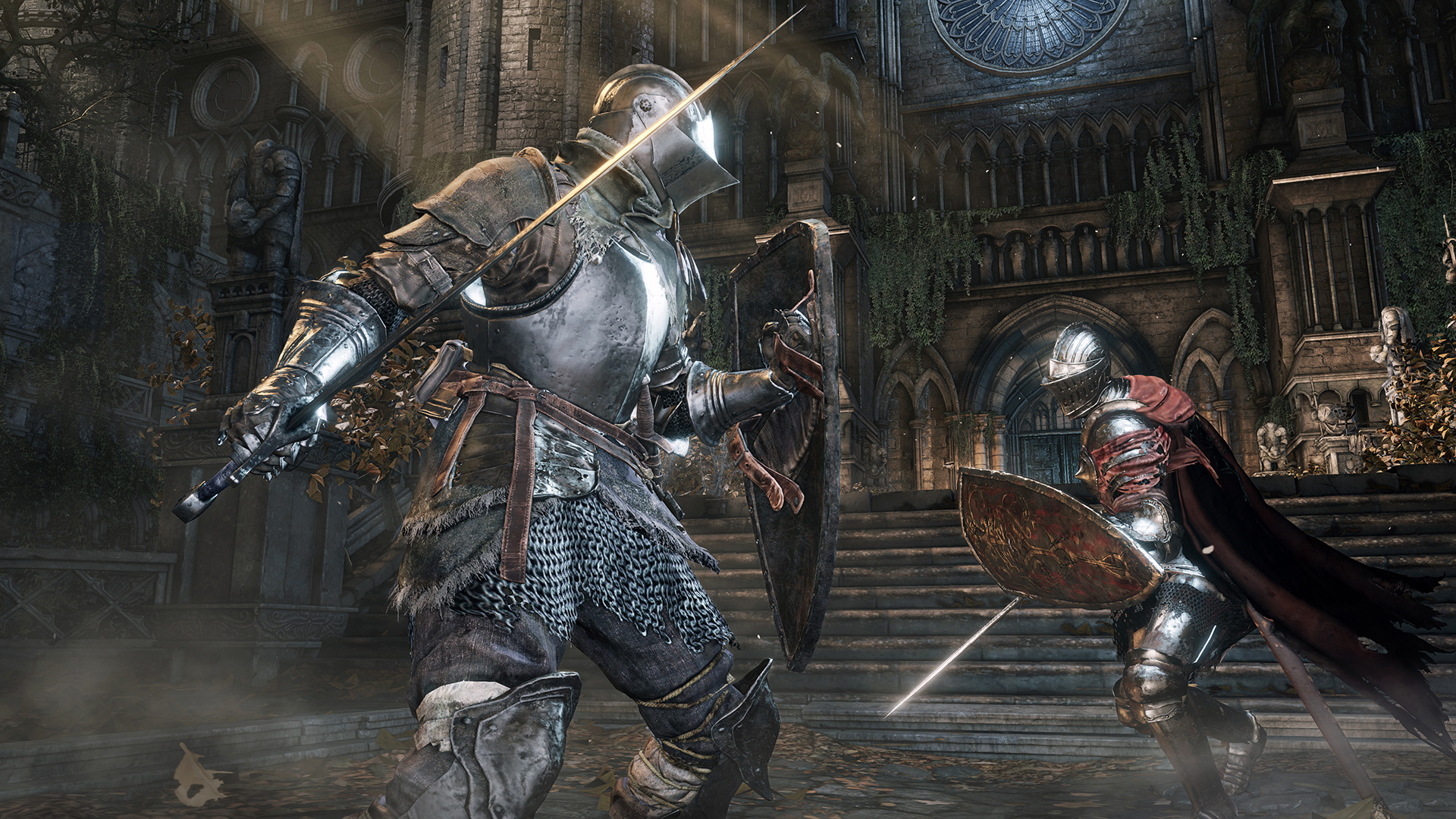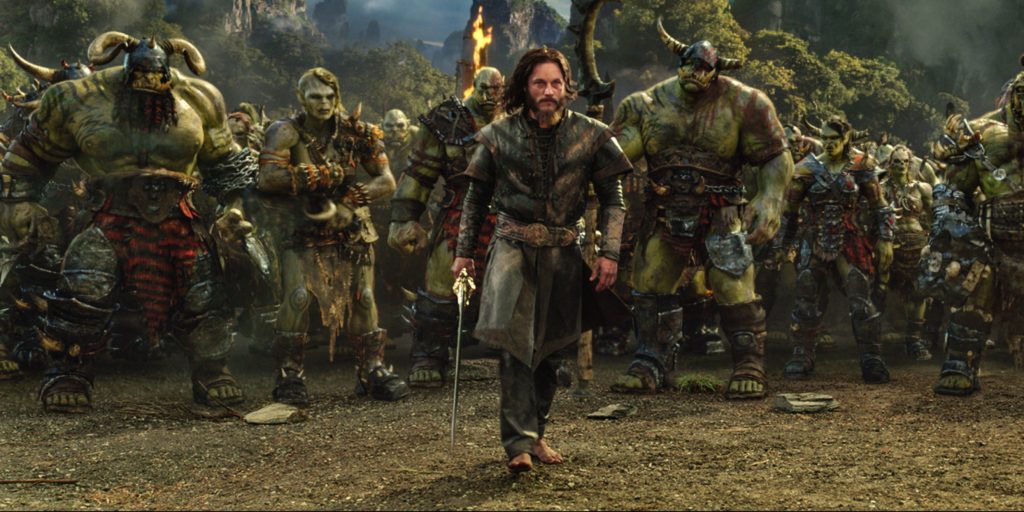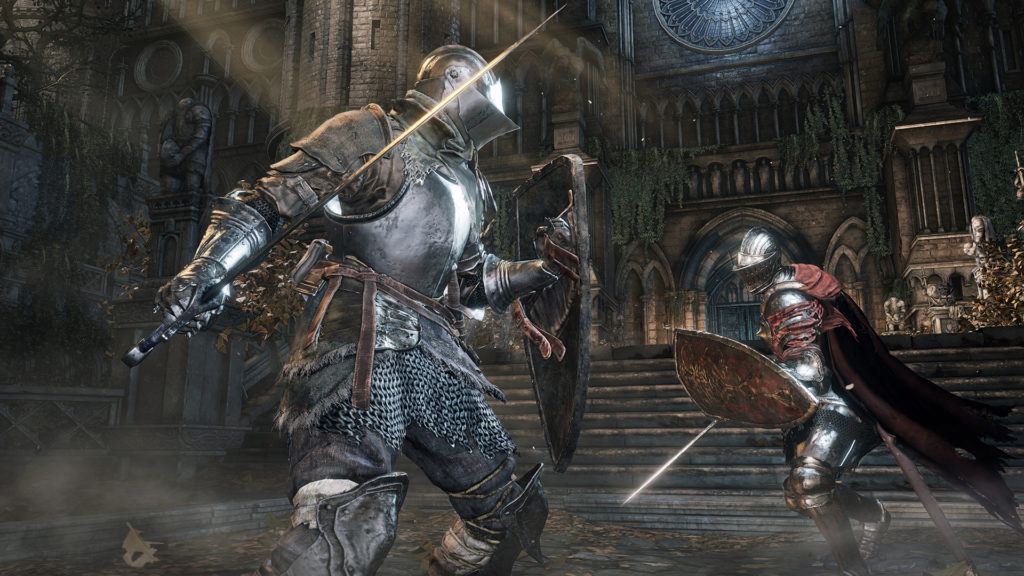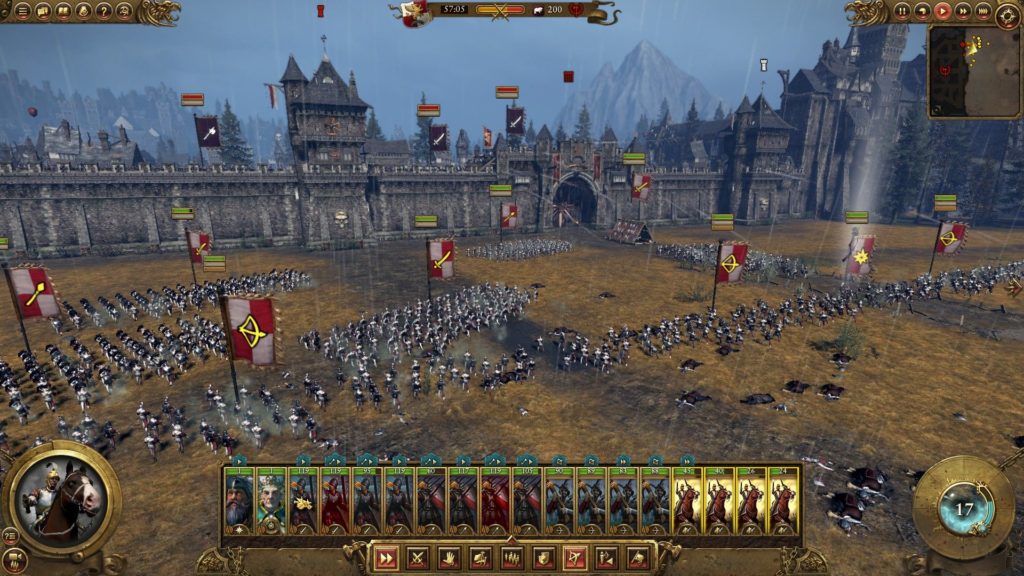
Posted by Ciaran Stoker
31 October 20162016 has had its fair share of popular medievalism in the media. However, for video game medievalism in particular, this year has been one of record-smashing and new frontiers. From the blockbuster cinema experience of Warcraft: The Beginning bringing in over $400 million (making it the most successful video game franchise film of all time) to the bestselling new Minecraft handbook Medieval Fortress, stock images from the Middle Ages continue to stand front and centre in the modern imagination. But is this commercially-driven movement positive for ‘medieval studies’, as we understand it, or is it a step in the wrong direction?

Arguably the biggest medieval title of the year was FromSoftware’s Dark Souls III, which sold an eye-watering three million copies in little more than a month of its global release in April. Not only did this immensely successful hack-n-slash RPG become the bestselling media content in North America during its first month, it also highlighted the huge amount of interest that exists for the digital Middle Ages in the modern world. Regardless of one’s own cultural heritage (Dark Souls III was commerically triumphant in Asia, North America, and Europe respectively), the Gothic architecture, eurocentric medieval weaponry, and distinctly Western mythology of the game was clearly attractive to a wide audience. What is most interesting about the Dark Souls franchise, from a medievalist perspective at least, is that it is poduced by a Japanese company and thus represents a Japanese reimagining of the Middle Ages in Europe. One might see FromSoftware’s approach as an ‘outside’ perspective on a medieval culture, although the extent to which we as Europeans are ‘outside’ our own medieval heritage is itself debatable. Of course, this idea of reimagining another society’s history is not new in digital medievalism, considering that the vast majority of media set in medieval Europe is actually produced by (and largely for) Americans. To my mind, this is largely a positive phenomenon. The further we, as a global society, distance ourselves from the Middle Ages, the easier it becomes to examine them without socio-political agendas colouring our perspectives. Dark Souls III is not a commentary on modern events or on medieval cultures, it is simply using a fantasy European Middle Ages to create an engaging world that compliments the fast-paced, nerve-wracking gameplay style. However, not all medieval game developers this year have used the Middle Ages in quite such a frivolous fashion.

Also set to become a major medieval title of 2016 is Ubisoft’s imminent release of Assassin’s Creed: The Ezio Collection, which contains HD remasters of Assassins Creed II (2009), Brotherhood (2010), and Revelations (2011) in a single box. The Assassin’s Creed franchise, for those unfamiliar with it, sets its games in key socio-political episodes from history – be that the Holy Land during the Third Crusade, Massachusetts in the American War of Independence, or, as in this case, fifteenth-century Renaissance Italy. One of the biggest intellectual properties in the gaming industry, Ubisoft’s action-adventure series has hit somewhat of a slump in sales and review scores in recent years. No doubt it is hoped a return to some of the earliest (and undoubtedly best) outings for the company, combined with a feature film starring Michael Fassbender this December, might help rekindle Assassin’s fire. Never a company to shy away from controversy, Ubisoft’s questionable representations of history have got them into hot water on numerous occasions, often due to their portrayal of key historical characters or events. At the very least, this controversy suggests some gamers are self-aware of the medievalism at work in the games they play, and of the importance of approaching such topics with caution. Whilst the Italian Renaissance Assassin Ezio Auditore has always been a fan-favourite in the series, one might also consider the decision to avoid a remastered version of Altair Ibn La Ahad’s story from the original game – and its interesting take on twelfth- and thirteenth-century Middle Eastern history – an uncharacteristically prudent move by Ubisoft, given current geopolitics. For me personally, I am hoping the Ezio Collection might encourage the franchise to return to its medieval roots and explore some of the other fascinating chapters in the medieval history in future games. Without a doubt, the Middle Ages still has almost limitless mileage left as a setting for video games generally and my next post will examine some of the ways this has been realised, and capitalised on, by developers releasing titles in 2017.

This is not to say that the age-old genre of medieval fantasy is dying out. Before I draw my conclusions I’d like to do a quick round-up of some of the numerous psuedo-medieval fantasy video games that have sprung up this year. Total War: Warhammer ventures into new territory for the historical military simulator Total War series, building on the lore of Games Workshop’s tabletop game Warhammer to create medieval battles filled with monsters and magic. Released on 24 May, it is the fastest selling Total War game to date, accumulating half a million sales within its first few days on shelves. A week later, the latest in the Witcher franchise, the expansion pack Witcher III: Wild Hunt: Blood and Wine, received near perfect scores across the boards, cementing the Polish medieval fantasy’s place in mainstream gaming with record sales. And finally, a high-definition remake of Bethesda’s masterpiece, Skyrim, was released on 27 October, which gives players a chance to explore a fictional world inspired by Nordic mythology for a second time (or for those who have been living under a rock – a first time), complete with dragons, draugr, skalds, and runestones.

How might we as medievalists summarise this year in the gaming industry then? A year of expansion, certainly, with more people enjoying games set in medieval worlds than ever before. But also a year of waiting. By this I mean that whilst 2016 has had more than a standard helping of media creations set in, or drawing upon, the Middle Ages, this year has really been about setting up several big releases in early 2017. In my next post I will take a look at some of the upcoming titles due to hit shelves next year and consider what the immediate future of video game medievalism might be. How has 2016 been for you as medievalists, historians, or simply as gamers? Comment below and let me know. That’s it from me for now but I’ll see you next time!
Ciaran Stoker completed his MA in Medieval Studies at Exeter this year. His MA dissertation investigated video game medievalism.